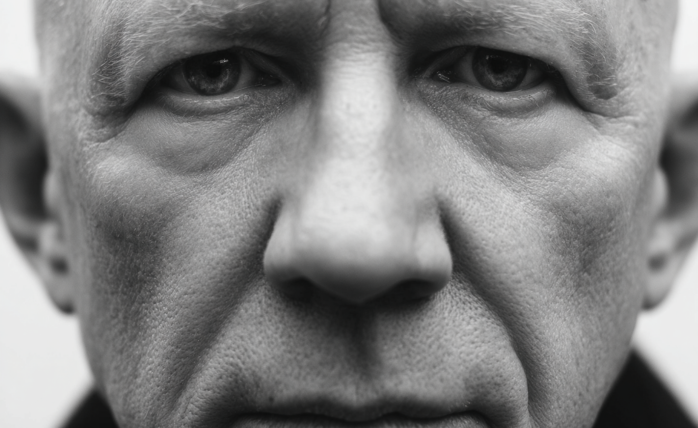Change Your Mindset
Debunking 21 of the Most Common Leadership Myths
It has been proved beyond doubt that leaders are made rather than born

Do you think leaders should be tall and handsome? Do you opine leaders must know everything? Do you think leaders must have a magic wand? Do you think women cannot make good leaders? Do you think leaders should be intelligent with a strong academic background?
Then you need to reconsider your views on leaders and leadership. There are several myths associated with leaders and leadership. And there are several definitions of leader and leadership. If you hit Google you get a huge number of hits on leaders and leadership, and many definitions of leadership. Hence, before we define leader and leadership, it is essential to debunk several myths about leaders and leadership.
Myth # 1: Leaders are born, not made.
Truth: Several theories are highlighting various aspects of leadership such as skills theory, behavioral theory, great man theory, trait theory, etc., Previously people believed that either people had leadership qualities, or not.
However, through research, it has been proved beyond doubt that leaders are made rather than born. Just because the father or mother is a leader the son or daughter cannot be a natural leader. In addition, leadership is a behavior that can be learned through training and practice.
Myth # 2: Leaders must be tall.
Truth: People often think that leaders must be tall with great height so that they will be able to influence others. No doubt, having a great height is an asset but some great leaders were short in height but achieved greatness. For instance, Alexander was short in height but became great through his conquests more than 2,300 years ago.
Although Adolf Hitler failed during the Second World War, he was a leader who was short in height. Similarly, Mahatma Gandhi was also short in height but he achieved India’s independence through truth and non-violence. Hence, height is not the criterion to become a leader.
Myth # 3: Leaders must be handsome.
Truth: Leaders must walk their talk and set an example for others to follow. They must have a vision, be able to influence others, build successful teams, motivate, and finally accomplish their goals and objectives. Hence, there is no connection between their roles and physical appearance. For instance, Abraham Lincoln was not good-looking, but he proved to be one of the best presidents of America.
Myth # 4: Leaders must be highly intelligent.
Truth: Numerous examples prove beyond doubt that leaders hail from an average academic background. When we look at the leaders of Fortune 500 companies, it reveals that more than 50 percent of CEOs hail from an average academic background.
However, having an academic qualification is an asset for a leader. But every leader must not be academically intelligent. When we look at Richard Branson, Bill Gates, Michael Dell, Steve Jobs, and Mark Zuckerberg, they are all college dropouts. Hence, we can emphatically conclude that most leaders have average intelligence.
Myth # 5: Leaders must be extroverts.
Truth: Some leaders are introverts yet proved their leadership qualities. Steve Jobs of Apple Computers was an introvert who proved as an innovation legend during his lifetime. It is the nature of people either to be introverts or extroverts, and it has nothing to do with leadership.
Myth # 6: Leaders must be veterans.
Truth: Having experience and being older is an asset to leaders as they make fewer mistakes, and benefit from their vast experience and age. At times, it proves to be costly for these veterans as they have preconceived ideas with a regimented mindset.
The young have fire in their bellies and are ready to experiment and explore their ideas, and mostly they achieve and succeed in their lives. Several leaders proved their leadership potential at a relatively young age. For instance, Alexander, the Great achieved greatness by the age of 34 itself and led people of all age groups despite being young.
Various business leaders such as Michael Dell, Mark Zuckerberg, and Bill Gates proved as business leaders at a young age itself. And Barack Obama has become the president of America at the relatively young age of 47 and also, John F. Kennedy became President at a young age. These young leaders broke the age-old myth by leading the veterans.
“The most dangerous leadership myth is that leaders are born ― that there is a genetic factor to leadership. This myth asserts that people simply either have certain charismatic qualities or not. That’s nonsense; in fact, the opposite is true. Leaders are made rather than born.” ―Warren G. Bennis
Myth # 7: Leaders must be charismatic.
Truth: Charisma is an exclusive charm and magnetism some people possess. It is the ability to dress well, speak well, present with positive body language, and radiate constant energy and enthusiasm. If leaders possess charisma it is an asset, but not possessing it, is not a liability. Some leaders proved their best without any charisma. Succinctly, character counts, not charisma.
Myth # 8: Leaders must be orators.
Truth: It is a fact that good leaders are great orators, but it is not necessary that leaders must be orators. For instance, Alex Ferguson is a great leader if you consider his results with Manchester United, but he was not a great orator. Some leaders are not great orators, but they still succeeded as leaders. Leadership is a blend of various traits, skills, and abilities.
While some possess some qualities, others possess some other qualities. You must consider leadership holistically with a blend and balance of various aspects.
Myth # 9: Leaders must have titles and positions.
Truth: The positions and titles are temporary. What is important is the individual capacity to lead from the front, not the titles or positions. If leadership is based on positions, why do we see a few leaders falling apart from their positions? Leadership is performance-driven, not position, or role-driven.
According to social psychologists, John French and Bertram Raven, power is divided into five forms—legitimate, coercive, reward, expert, and referent power. One who holds his/her power just because of his/her legal standing vested in him/her by an organization is known as legitimate power. Such people hold power as long as they hold their legitimate positions.
Coercive power is a negative power such as threats, or punishments that usually prevail in autocratic societies, and such people are hardly respected. Reward power is the ability to reward others and people enjoy their positions as long as they reward others.
Expert power is the position where people have expertise in some areas. Precisely, they are domain experts. Finally, referent power is the power where people enjoy status not bestowed by law, or position but because people admire such leaders.
Leaders such as Mahatma Gandhi, Martin Luther King Jr. Dalai Lama, Mother Teresa, and Nelson Mandela enjoyed referent power as people revered and supported them. Most of the leaders survive on their expert power and fade away in history.
However, those leaders who passionately deliver goods through their expertise enjoy referent power. Hence, titles and positions don’t make real leaders, but their referent power makes them true leaders.
Myth # 10: Leaders are self-appointed.
Truth: You cannot claim yourself to be a leader. It is the people who must accept and consider you a leader. It gives you strength as a leader and demonstrates your humility. If you appoint yourself as a leader and blow your own trumpet, you will be treated as a chatterbox and a person who craves hype.
Myth # 11: Leaders have all solutions for problems.
Truth: Leaders are the people who are not ready with solutions but the people who take responsibility and search for solutions.
If followers emphasize people and problems, the leaders emphasize prospects. If followers brood on individuals and issues, the leaders invent ideas for resolving various challenges. Most of the time leaders take initiative and discuss with others, create multiple solutions, and then shortlist the best one for implementation.
Myth # 12: Leadership is observed only in the workplace.
Truth: As a leader, you are always under the scanner. Don’t assume that your leadership is observed only during working hours, and in the workplace. People keep an eye on you outside the workplace to observe and learn from you. Hence, leaders must be careful about, the way they dress, and the way they walk and talk.
Myth # 13: Leaders must have a long tenure.
Truth: Your length and duration of survival as a leader are not the criteria. In contrast, how well you lead and leave a mark for others to follow is the criterion for leadership. For instance, Abraham Lincoln was assassinated before the completion of the presidential term.
However, the impact he made before his presidential tenure is amazing in the history of America. He has been rated as one of the most influential Presidents of America who survived the challenges of the division of America between the north and the south. He successfully demonstrated his leadership skills and worked for the unity of America apart from ensuring the abolition of slavery in America.
When you look at Alexander the Great, he too had a short tenure and died young much before 34 years. Hence, the quality of presence is more important than the quantity of presence.
Myth # 14: Leaders should not have any weaknesses.
Truth: Every leader is a human being first. Every human being has both strengths and weaknesses. The only greatness with leaders is that they realize their weaknesses and convert them into strengths, and threats into opportunities. Whenever they make mistakes due to their weaknesses they realize, correct, and move forward aggressively without being overly worried about them.
Myth # 15: Leaders are masters, not servants.
Truth: Robert Greenleaf propounded servant leadership where leadership is serving others with a great heart. Leaders demonstrate and show to others while leading. Leadership is not in sitting in cushion chairs and making decisions. Leadership is walking the talk and setting an example for others to emulate and excel. Above all, leadership is to serve others by remaining as a servant with humility.
Myth # 16: Leaders grow on trees.
Truth: Leaders grow from the grass-root level, not the other way round. It is a bottom-to-top approach rather than a top-to-bottom approach. The kind of experience and exposure churns real leaders at the ground level to come to the fore. It distinguishes cheese from chalk. Indeed, the cream always comes to the top. Hence, true leaders rise from ranks.
Myth # 17: Leadership is a solo act.
Truth: Leadership is teamwork. No individual can take credit for the success of the entire team. Besides, there are several myths such as leaders are born in a particular community, culture, country, race, religion, and language. The truth is that they are born everywhere. Some complain about destiny for not being born in majority communities.
The leaders can also emerge from minority communities leading the majority. Barack Obama is an amazing example for all of us who were born black, with a Muslim father and Christian mother with origins outside America but led America and the world from the front.
Myth # 18: Women cannot excel as leaders.
Truth: Gender has nothing to do with leadership. It is a fact that women have more challenges than men to prove themselves as leaders as some organizations don’t encourage women to be on par with men although legally women are on par with men.
Globally very few women did great as leaders leaving exceptions like Queen Elizabeth, Joan of Arc, Florence Nightingale, Eleanor Roosevelt, Frances Hesselbein, and Margaret Thatcher. Indra Nooyi, the former Chairman & CEO of PepsiCo is a corporate woman leader who broke the glass ceiling and became a role model for all women. Being born as a woman is not a liability.
It all depends on how you lead and prove yourself. Women have several advantages over men as they are emotionally more intelligent, better at multitasking, assertive, and have soft skills. Hence, they can prove themselves as successful leaders along with men.
Myth # 19: Everybody cannot become a leader.
Truth: Leadership is not the privilege of a few people. The proven fact is that anybody and everybody can excel as a leader if there is a passion to serve and make a difference in the lives of others. Warren Bennis and Burt Nanus in their book titled, Leaders: The strategies for taking charge identified five great leadership myths leadership is a rare skill, leaders are born, not made, leaders are charismatic, leaders exist only at the top of an organization, and the leader controls, directs and manipulates. Hence, debunk all these myths to have the right approach towards leadership.
Myth # 20: Once a leader is forever a leader.
Truth: Leadership changes from time to time because what worked for some time may not work again due to rapid changes in technology. Hence, leaders must reinvent with changing times. Else, they will soon be forgotten leading to leadership decay. At times, circumstances might favor a person to become a leader, but the same leader fails in different circumstances.
Jack Welch rightly remarked, “The Jack Welch of the future cannot be like me. I spent my entire career in the United States. The next head of General Electric will be somebody who spent time in Bombay, Hong Kong, in Buenos Aires.
We have to send our best and brightest overseas and made sure they have the training that will allow them to be the global leaders who will make GE flourish in the future.” To evolve and excel as successful leaders, leaders must learn and grow continuously and they must take feedback constantly.
Myth # 21: Leadership can’t be taught.
Truth: Leadership is a skill, not a talent. Had it been a talent it would have been tough to teach leadership. But leadership is a skill, and it can be taught. There is a difference between talents and skills. Talents are inborn where people bring in through heredity.
In contrast, skills can be cultivated through training, teaching, observation, reading, experience, and practice. Daniel Goleman said that leadership depends more on emotional intelligence and less on an intelligence quotient. And emotional intelligence can be taught. Hence, leadership can be taught.
Life
10 Research-Backed Steps to Create Real Change This New Year
This New Year could finally be the one where you break old patterns and create real, lasting change.

Every New Year, we make plans and set goals, but often repeat old patterns. (more…)
Change Your Mindset
The Silent Skill That Makes People Respect You Instantly
What truly earns respect and why most people go about it the wrong way

Everybody craves respect but not everyone earns it. Some people believe that a title, years of experience, or a position of authority automatically entitles them to respect. (more…)
Change Your Mindset
How to Turn Your Mind Into Your Greatest Asset (Instead of Your Enemy)
The thoughts you feed your mind today quietly become the life you live tomorrow.

The human mind has two parts: the conscious mind and the subconscious mind. Both work together, but each has a very distinct role in shaping your life, decisions, habits, and results. (more…)
Did You Know
The Success Patterns You Inherited (And Didn’t Notice)
Your family history may hold the key to why you think, act, and feel the way you do today.

Who are you? Your experiences and your family’s narratives and legacies contribute to your identity. Your ancestry contains individual traits and forces that have been inherited over the years. It also carries the fights and victories of your forebears and older family members. (more…)
-

 Shift Your Mindset4 weeks ago
Shift Your Mindset4 weeks ago11 E’s That Define Every Great Leader And Why Most People Miss Them
-

 Did You Know3 weeks ago
Did You Know3 weeks agoThe Success Patterns You Inherited (And Didn’t Notice)
-

 Entrepreneurs3 weeks ago
Entrepreneurs3 weeks agoThe Essential Skills Every Entrepreneur Needs In 2026
-

 Business4 weeks ago
Business4 weeks agoThe Hidden Money Pit in Your Operations (and How to Use It)
-

 Change Your Mindset2 weeks ago
Change Your Mindset2 weeks agoHow to Turn Your Mind Into Your Greatest Asset (Instead of Your Enemy)
-

 Change Your Mindset2 weeks ago
Change Your Mindset2 weeks agoThe Silent Skill That Makes People Respect You Instantly
-

 Life1 week ago
Life1 week ago10 Research-Backed Steps to Create Real Change This New Year
-

 Tech1 week ago
Tech1 week agoWhat’s in a Name? How to Get Your Domain Right

























